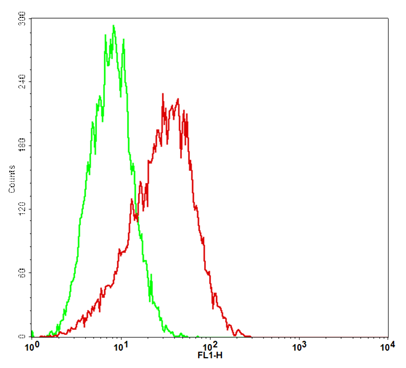Recombinant Human GLP1R Protein, hFc Tag
Shipping Info:
For estimated delivery dates, please contact us at [email protected]
| Amount : | 50 µg |
| Content : | Lyophilized from sterile PBS, pH 7.4. Normally 5 % - 8% trehalose is added as protectants before lyophilization. |
| Storage condition : | Store at -20°C to -80°C for 12 months in lyophilized form. After reconstitution, if not intended for use within a month, aliquot and store at -80°C (Avoid repeated freezing and thawing). Lyophilized proteins are shipped at ambient temperature. |
| Uniprot ID : | P43220 |
| Alternative Name : | GLP-1; GLP-1-R; GLP-1R |
Molecular Characterization: GLP1R(Arg24-Glu139) hFc(Glu99-Ala330)
Molecular weight: The protein has a predicted molecular mass of 39.7 kDa after removal of the signal peptide. The apparent molecular mass of GLP1R-hFc is approximately 35-70 kDa due to glycosylation.
Description: Recombinant Human GLP1R Protein with C-terminal human Fc tag
This gene encodes a 7-transmembrane protein that functions as a receptor for glucagon-like peptide 1 (GLP-1) hormone, which stimulates glucose-induced insulin secretion. This receptor, which functions at the cell surface, becomes internalized in response to GLP-1 and GLP-1 analogs, and it plays an important role in the signaling cascades leading to insulin secretion. It also displays neuroprotective effects in animal models. Polymorphisms in this gene are associated with diabetes. The protein is an important drug target for the treatment of type 2 diabetes and stroke. Alternative splicing of this gene results in multiple transcript variants.
Molecular weight: The protein has a predicted molecular mass of 39.7 kDa after removal of the signal peptide. The apparent molecular mass of GLP1R-hFc is approximately 35-70 kDa due to glycosylation.
Description: Recombinant Human GLP1R Protein with C-terminal human Fc tag
This gene encodes a 7-transmembrane protein that functions as a receptor for glucagon-like peptide 1 (GLP-1) hormone, which stimulates glucose-induced insulin secretion. This receptor, which functions at the cell surface, becomes internalized in response to GLP-1 and GLP-1 analogs, and it plays an important role in the signaling cascades leading to insulin secretion. It also displays neuroprotective effects in animal models. Polymorphisms in this gene are associated with diabetes. The protein is an important drug target for the treatment of type 2 diabetes and stroke. Alternative splicing of this gene results in multiple transcript variants.
|
There are currently no product reviews
|



















.png)










